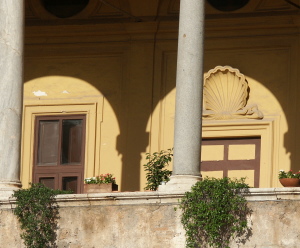Our study tool: the PerformArt database
Our research project is grounded in the use of numerous types of documents and benefits from a collaboration with archivists and specialists ascribing to a number of disciplines. We have opted for a SGBD-R relational database which facilitates the input and analysis of a vast quantity of material. The development of the database has been entrusted to Foucauld Pérotin.
All documents catalogued, described and transcribed by our archivists and researchers will be collected by the database as sources. These will include correspondence, wills, post mortem inventories, books, payment receipts, record books, musical scores, libretti, etc. The database will also record people, works, institutions, places, regalia (movable objects and buildings), events and transactions directly connected with the documents, as well as the entire bibliography connected with each specific sample of data.
A relational database
 In such a data structure, each element is inserted only into its own “table”, but is available to complete information on related elements which are connected through links between the tables. For example, in itself an event essentially consists of a description, a venue and a date. However, it implies individuals, institutions, venues, sources of the works and a bibliography. The creation of multiple links between different categories of data will progressively enrich information relating to each table (concerning a person or a work, for example), which may accessed from related data.
In such a data structure, each element is inserted only into its own “table”, but is available to complete information on related elements which are connected through links between the tables. For example, in itself an event essentially consists of a description, a venue and a date. However, it implies individuals, institutions, venues, sources of the works and a bibliography. The creation of multiple links between different categories of data will progressively enrich information relating to each table (concerning a person or a work, for example), which may accessed from related data.
Thesaurus
A specific hierarchical thesaurus has been developed in order to define the descriptive terms which are best adapted to this specific research project and historical era. The included data will not only provide a description of archival documents, but also of other elements in the database, such as people, works, objects, etc.
Database usage
The application will enable advanced multiple-criteria searches for non-technical users. Additional functions will also be able to produce different types of reports and tools mostly in an automated fashion, such as genealogical trees, professional or social networks, catalogues of sources, as well as works, maps, chronologies and statistics.
The data is available on a permanent website
30/03/2023: We are now at the end of the project, and all the relevant data in the database has been made available to the public in the form of a dynamic website, here performart.huma-num.fr